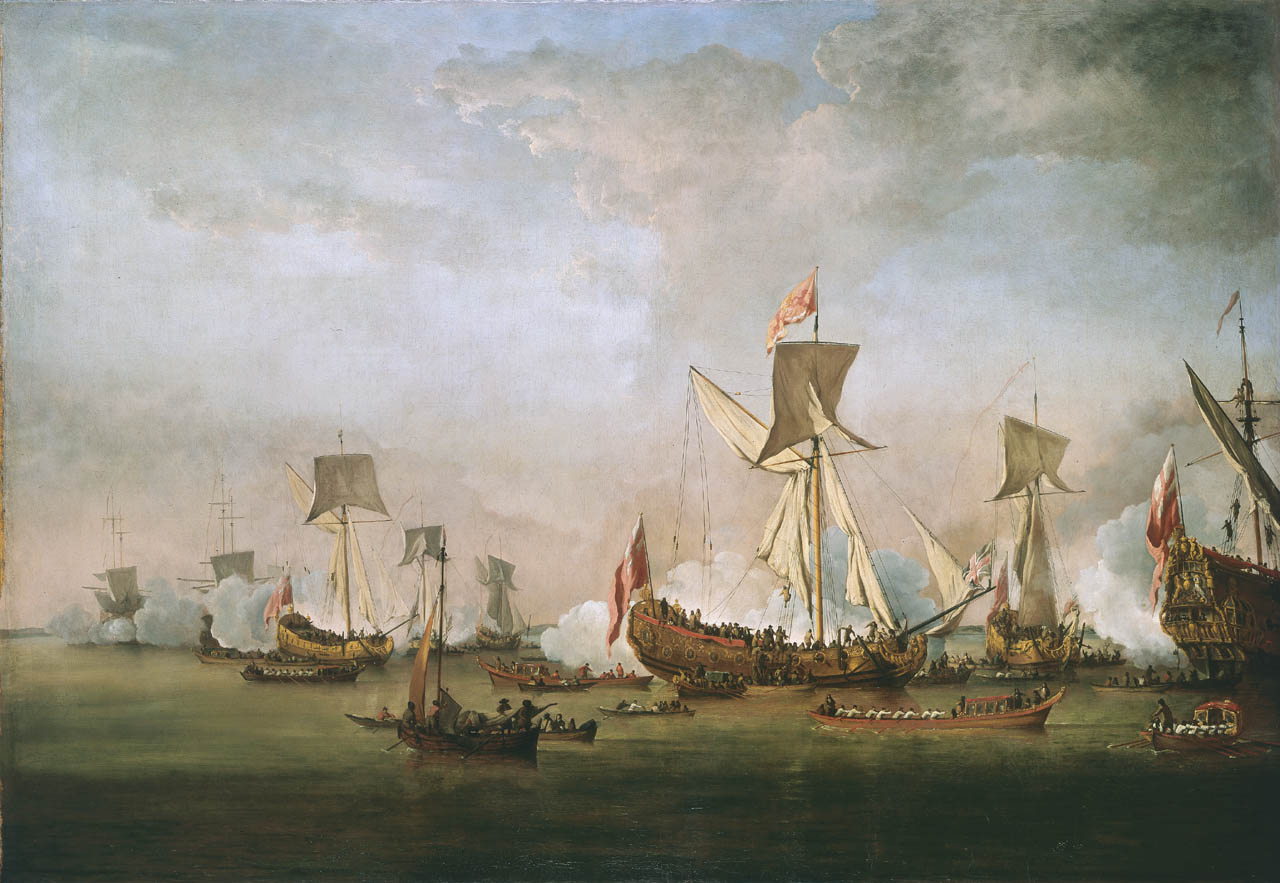The Van de Veldes: Greenwich, Art and the Sea – The Queen’s House, Greenwich
A well-considered exhibition at the Queen’s House in Greenwich aims to restore the Van de Velde family to some of their former fame and glory, but is also interesting for its insights into the art world of the 17th-18th Centuries.
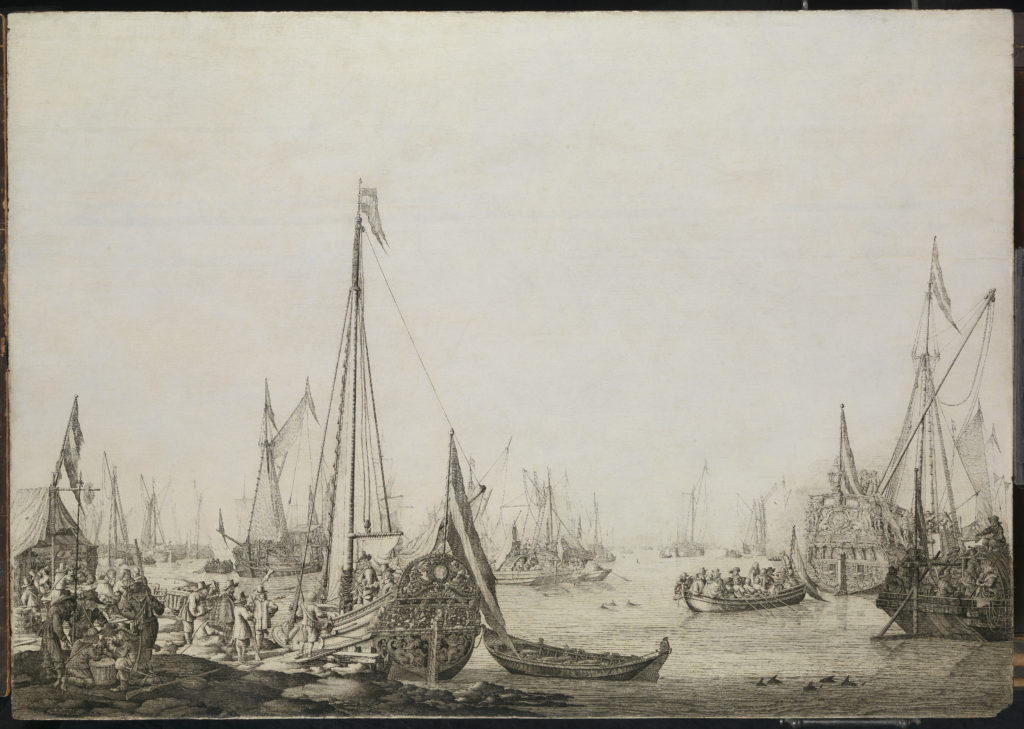
Lead image: Willem Van de Velde the Younger, Departure of William of Orange and Princess Mary.
Images © National Maritime Museum, London.
Who Are The Van de Veldes?
The thing about the Van de Veldes is, even if you haven’t heard of them, you will have seen paintings of the type they popularised in England. The Van de Veldes were a Dutch family who, over two or three generations, became a powerhouse of artistic production. They invented new types of art. They popularised maritime paintings as a genre. With support from a royal patron, they built up a clientele across Europe. When Cosimo de Medici came to the Dutch Republic in 1667, Willem Van de Velde the Elder was one of two artists he sought out. The other? Rembrandt.
So why aren’t they household names like Rembrandt is? Maybe it’s partly to do with the subject matter. Apart from Adriaen Van de Velde who branched out a little, the Van de Veldes really specialised. Marine subjects. Battles at sea, royal flagships, that type of thing. Perhaps a little too niche for their fame during their lifetimes to endure. I wonder as well if the fact that they were a family business which eventually shut down (during the time of Cornelis Van de Velde in 1714) caused their memory to fade. This is all pure speculation, however, so let’s get onto some facts.
Willem Van de Velde (known as The Elder) was born in 1611 in Leiden. He was a self-taught ship’s draughtsman who became an artist. Deployed as a sort of war journalist who would float around capturing key details during sea battles for later paintings and records, he invented the technique of ‘pen painting’ (penschilderij), etching-like paintings in ink which allowed him to capture an astonishing level of detail.
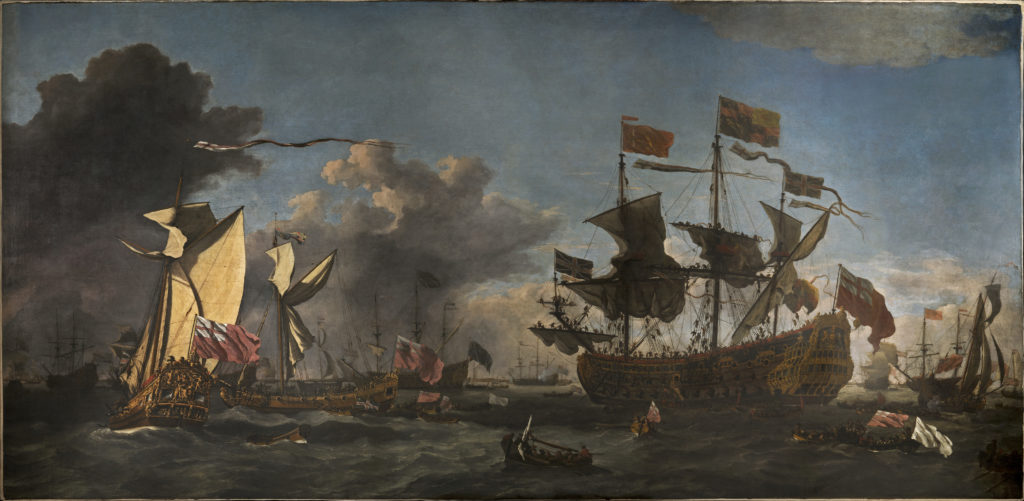
The Greenwich Connection
Part of the historic background to this exhibition is that there were a number of Anglo-Dutch Wars in the 17th and 18th Centuries. Plus, of course, a fair bit of unrest in England itself, with Revolutions and Restorations and all that. A very key detail for this story is that Charles II, after his defeat by Oliver Cromwell at the Battle of Worcester in 1651, was in exile in the Dutch Republic. This didn’t stop him later heading up one of those Anglo-Dutch Wars against his former hosts, which is why I had a little trouble figuring out all these historic details. Let me try to give you a summary of the key points you need to know:
- There were an awful lot of naval battles going on due to all these wars. Therefore quite a market for people wanting to commemorate their wins or their tragic losses.
- Charles II had quite a Dutch connection and knew the Van de Veldes, who witnessed his departure back to England in 1660
- Charles II was quite canny, and after a disastrous year in the Dutch Republic in 1672, invited Dutch citizens to live in England, despite the ongoing war between the two countries
- About that time he invited the Van de Veldes to come live in England, have a studio, and a salary of £100 a year each (basically they were on retainer in case Charles needed a quick maritime painting dashed off)
Guess where that studio was? That’s right, the very Queen’s House we are in for this exhibition! They didn’t live here (although they did live in Greenwich). They just worked here. What better place than what is still known as ‘Maritime Greenwich’, with Royal Naval infrastructure, dockyards nearby, and ships passing up and down the Thames?
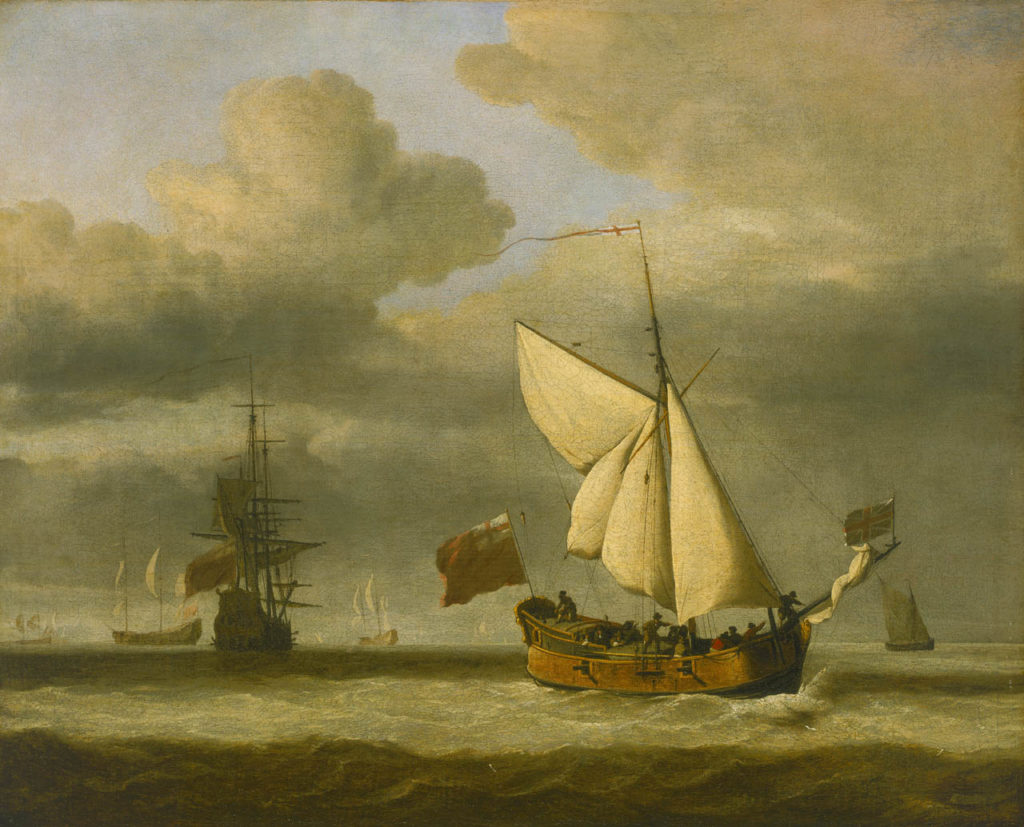
The 17th Century Art World
The Van de Veldes, as I’ve already mentioned, were pioneers. Willem the Elder invented penschilderij, which basically entailed a complex preparation technique to make canvasses resemble vellum, followed by building up an image in ink. Willem the Younger took his father’s subject matter and added drama. His works were in full colour oil paint, with the same accurate details of the ships he was depicting, but added stormy skies and rough seas. Adriaen was a brother, who died at 35 and also painted but not just maritime scenes. And Willem the Younger’s son Cornelis is the one who eventually closed down the family business.
Anyway, one thing this exhibition does brilliantly is to bring the 17th Century art world in which the Van de Veldes operated to life. The texts accompanying the paintings and drawings explain both artistic and sales techniques. We learn what it was like to be a ship’s draughtsman, and how it helped the Van de Veldes to build up a library of images of ships. We learn how they prepared their canvases, and the way that they altered their subject matter depending on the nationality of their clients.
Seeing how they reused compositions, undertook preparatory drawings and worked with ship’s captains to develop new source material gives a great sense of art as business. Father and son divided activities for maximum efficiency. As did artists: the exhibition includes examples of portraits of naval figures by one artist, with a scene of ships outside the window painted by a Van de Velde and inserted separately into the canvas. A pre-Fordian production line of sorts.
It’s also possible to glean details of the London that supported this family enterprise. Following Charles II’s generous offer, there was enough of a Dutch community here that the Van de Veldes didn’t seem to learn fluent (written) English. An inscription brings this to life. Can you guess what the words “Roijal a’ schaep” refer to on one sketch? The phonetics are Dutch but the meaning is English: it’s “Royal Escape”.
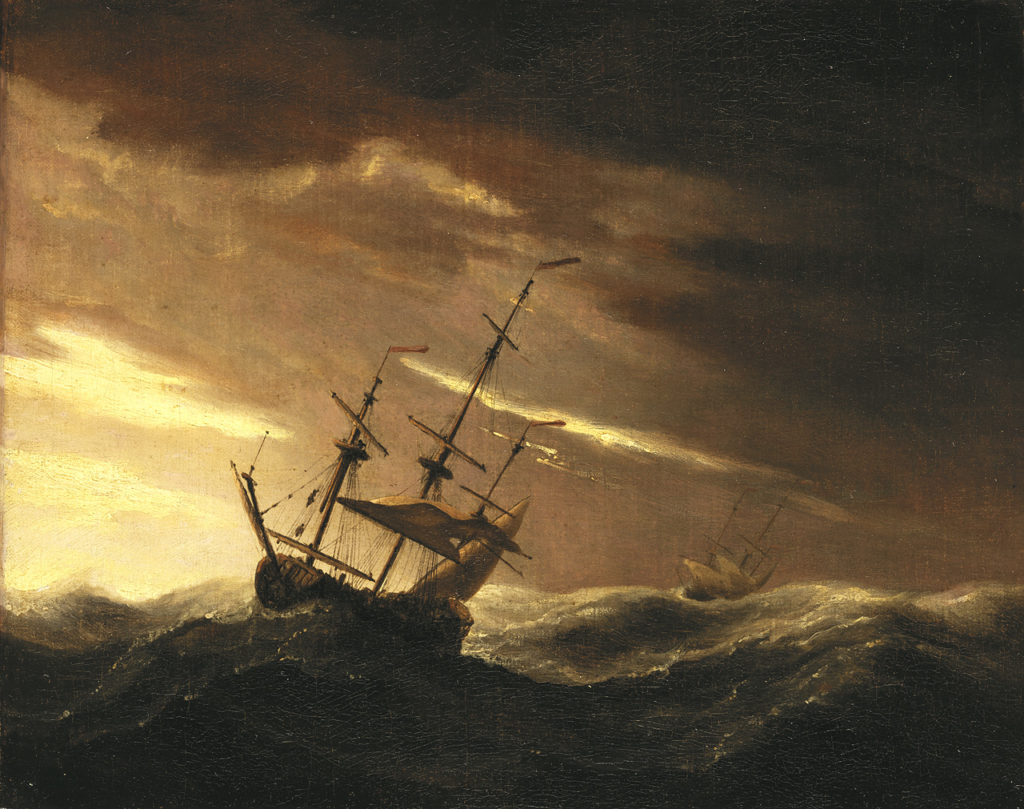
Celebrating Excellence
As well as having the location of the Van de Veldes studio at their disposal, Royal Museums Greenwich (RMG) also have the National Maritime Museum and its collection of their works, the world’s largest. The exhibition marks 350 years since father and son arrived in England. Its aims are to celebrate them as forgotten masters, and to look at their influence on British visual culture and artists.
The way that the Van de Velde paintings have been integrated into the Queen’s House for this exhibition is interesting. Some rooms have been taken over to tell their story. Others have ‘Gone Dutch’: with varying degrees of alteration to their usual thematic groupings of works. There is a flow to the exhibition which is slightly at odds with the usual visitor route, which I did find confusing. But there are clear wall texts in each room that explain the part of the story being covered.
In preparation for the exhibition, RMG have undertaken significant restoration of some works. An enormous tapestry has benefited from this treatment, as well as some paintings released from old varnish and looking fresh and new. The National Maritime Museum collection has been supplemented with select works from elsewhere including the Royal Collection. In my opinion the resulting exhibition hits a trifecta. It’s academically rigorous, communicates information clearly and simply, and has a great selection of interesting objects. The aim of celebrating these talented artists is definitely achieved, as well as teaching the audience about their work. Their subsequent impact is a little less prominently featured, but what more do you really need when Turner said of their work ‘this made me a painter’?
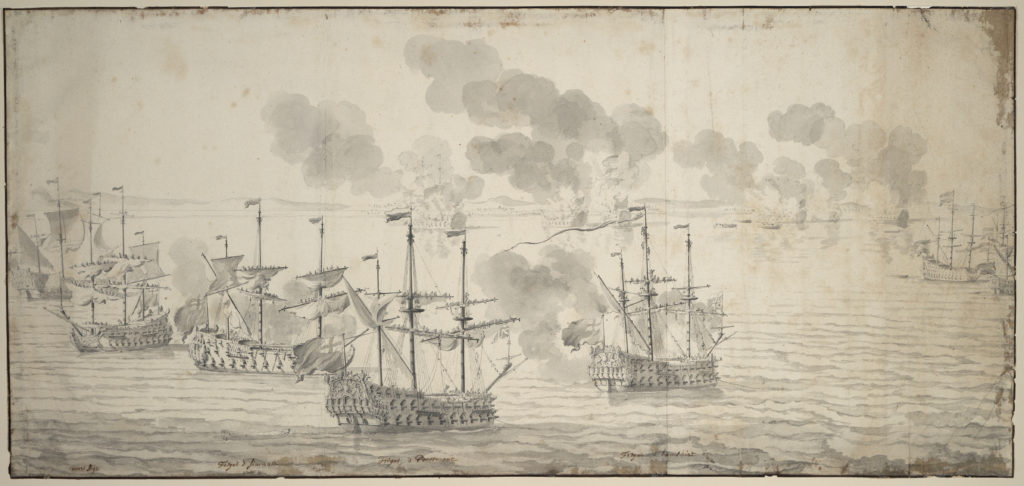
Final Thoughts On The Van de Veldes: Greenwich, Art and the Sea
I haven’t even told you one of the best parts yet: this exhibition is free. The Queen’s House normally is, but there is no additional charge for the exhibition. So you can enjoy world-class art, scholarship and curation on a budget-friendly trip to Greenwich.
My effusive praise may have misled you slightly in this review: I am not specifically a lover of maritime art. It was the way that the subject was presented which won me over in this case. Plus the exceptional quality of the artworks and unusual ‘pen painting’ style. There was perhaps a little more naval and political history than I would have liked, but that’s personal preference.
That is perhaps the beauty of this exhibition: all the angles. Whether you like art history, maritime/naval history or just plain old history, there is something here for you. You can engross yourself in the artists’ biography, the interesting techniques, or the naval battles. Or if you haven’t been to the Queen’s House before, you can enjoy it much as you normally would. The normal interpretation of the rooms is still there, and plenty of art by other artists as well.
The Van de Veldes: Greenwich, Art and the Sea is on for the best part of a year. If you’re in London, therefore, there are no excuses!
Salterton Arts Review’s rating: 5/5
The Van de Veldes: Greenwich, Art and the Sea on from 2 March 2023 to 14 January 2024
If you see this after your page is loaded completely, leafletJS files are missing.

